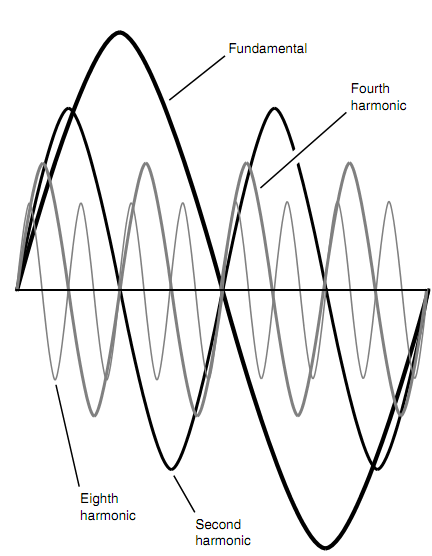Seiche And Harmonics:
Any children who lives in a house with a bathtub recognize about seiche (pronounced as "saysh"). Any enclosed or semi-enclosed body of water can be made to slosh back and forth at a rate which depends on the size and shape of the container. In a bathtub, such sloshing can be set up with a time-period of 1 or 2 seconds. Provide the water a little push, and then the other, and then another. Stay this up at a certain regular repetitive rate, and almost immediately there is water all over the bathroom. The similar thing can occur in a swimming pool during an earthquake, though the period is very large. Whenever waves moving in opposite directions collide, the peaks and trough are inflated (the figure is shown below).

Figure: Whenever waves collide, the effects are magnified.
Harmonics are well-known to anyone who plays a musical instrument like a flute, clarinet, trumpet, or trombone. When you can blast out a note with certain keys pressed or with the slide at a given location, then if you tighten your lips sufficient, you can sound a note one octave higher. Higher the note is the second harmonic of the initial note. The chamber of the instrument has twice as many wave peaks and valleys at the higher note as compared with the lower note. If you are a virtuoso, you may acquire the instrument to toot at three times the unique, or primary, frequency. This is the third harmonic. Mathematically, there is no boundary to how far this can go (the figure is as shown below). Whenever the frequency of one wave is a harmonic of the frequency of the other wave, the two waves are said to be harmonically associated.

Figure: Resonant effects take place at wavelengths which are whole-number fractions of the wavelength of the fundamental.